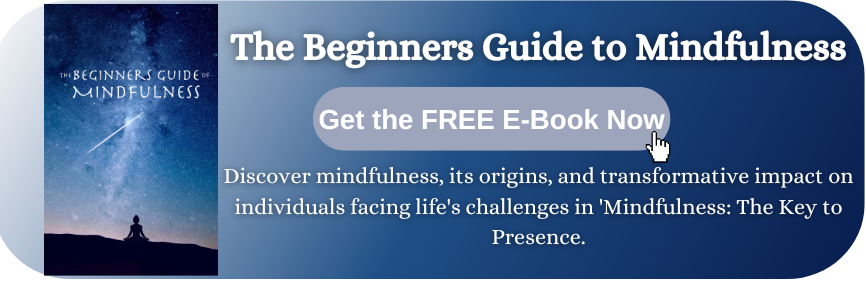Mindfulness: The Key to Presence
There is a constant need for peace and tranquility in our fast-paced world as we navigate the unrelenting tornado of obligations, concerns, and distractions. We long for a way to face life's obstacles with more significant serenity and resiliency, so we seek sanctuary from the storm of daily life. People worldwide are looking for inner peace and use various techniques to calm their thoughts and ease their worries. However, a time-tested and ancient practice calls out amid this search for balance and harmony—a practice known as "mindfulness".
So, what is "mindfulness"?
It's hard to pin down one single definition of mindfulness. Let's take a look at several definitions by several gurus.
Thich Nhat Hanh: Thich Nhat Hanh frequently highlights the ease of Mindfulness. He views practicing Mindfulness as being present in every activity, including walking, breathing, eating, and sitting. It entails paying attention to your sensations without judgment and cultivating a sense of connectivity with all living things.
Jon Kabat-Zinn: Jon Kabat-Zinn defines Mindfulness as "the awareness that arises from paying attention, on purpose, in the present moment, and non-judgmentally."
The Mindfulness Trail
Ancient Eastern ideologies and spiritual traditions, particularly Buddhism, significantly influenced the history of Mindfulness. Its history dates back thousands of years and is extensive and varied. A summary of Mindfulness's past is provided here:
Buddhist Origins (about 2500 years ago): Buddhism's central idea is mindfulness, also known as "sati" in Pali and "smti" in Sanskrit. The Buddha, also known as Siddhartha Gautama, is thought to have originally introduced it. The Buddha stressed the importance of Mindfulness in his teachings as a means to liberation from suffering and enlightenment.
Early Buddhist Texts: The earliest references to Mindfulness can be found in the Buddhist scriptures, specifically in the "Satipatthana Sutta" and "Anapanasati Sutta." These texts provide detailed instructions on various mindfulness practices, including Mindfulness of breath, body, sensations, and mental states.
Influence on Other Eastern Traditions: Mindfulness techniques spread outside of Buddhism and had an impact on other Eastern religions including Taoism and Hinduism. Over time, several mindfulness meditation techniques and awareness exercises emerged among different traditions.
Zen Buddhism: The core idea of Zen Buddhism, which originated in China and eventually expanded to Japan, is Mindfulness (sometimes referred to as "zazen"). Zen practitioners meditate while seated, concentrating on their breath and neutrally observing their thoughts.
Transmission to the West (20th Century): In the West, mindfulness techniques acquired popularity during this time. Teachers and academics who went to Asia to learn about and engage in mindfulness practice helped to facilitate this transmission. Famous people like Alan Watts and D.T. Suzuki contributed to introducing Zen Buddhism and mindfulness to western audiences.
Jon Kabat-Zinn and MBSR: At the University of Massachusetts Medical Centre in the late 20th Century, Jon Kabat-Zinn created the Mindfulness-Based Stress Reduction (MBSR) program. Because of MBSR, Mindfulness is now widely accepted in Western psychology and medicine and is available to people from all areas of life.
Modern-day Mindfulness Movement: Mindfulness is now a widespread phenomenon. It is frequently used in many contexts, including healthcare, education, corporate settings, and public settings. Many resources are available to assist people in incorporating Mindfulness into their daily lives, including books, classes, and programs.
For more about this topic, download our latest book "The Beginners Guide to Mindfulness" for FREE:
